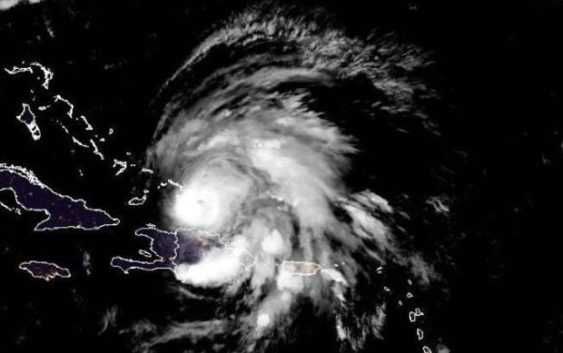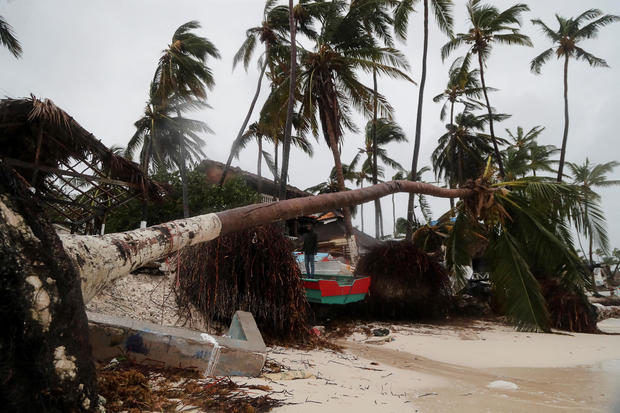- After Hurricane Beryl, Texas lawmakers push for generators at senior living facilities
- 20-million-gallon detention basin in Meyerland designed to help prevent flooding
- Firefighters report significant progress on McDowell County wildfire
- How to watch the FireAid benefit concert for LA wildfire relief
- FireAid, a benefit for LA wildfire relief, is almost here. Here’s how to watch and donate
Fiona becomes major hurricane as it nears Turks and Caicos Islands

Fiona strengthened into a major hurricane as it barreled toward the Turks and Caicos Islands Tuesday, prompting the government of the British territory to impose a curfew.
“Storms are unpredictable,” Premier Washington Misick said in a statement from London, where he was attending the funeral of Queen Elizabeth II. “You must therefore take every precaution to ensure your safety.” Misick was scheduled to return home on Thursday.
Fiona was centered about 20 miles southeast of Grand Turk Island early Tuesday with maximum sustained winds of 115 mph, making it a Category 3 hurricane, according to the U.S. National Hurricane Center in Miami. It was moving north-northwest at 10 mph.
The center said Finona is expected to keep intensifying over the next couple of days but wasn’t expected to threaten the U.S. mainland.
The storm was still dropping copious rain over the Dominican Republic and Puerto Rico early Tuesday.
The center said, “Heavy rainfall and localized life-threatening flash flooding continues over portions of the Dominican Republic today. Heavy rains around the center of Fiona impacts the Turks and Caicos through this afternoon with continued life-threatening flooding. Localized additional flash and urban flooding is possible in southern portions of Puerto Rico.”
The National Guard rescued more than 900 people as floodwaters continued to rush through towns in eastern and southern Puerto Rico with up to 30 inches of rain forecast for some areas.
In Puerto Rico, police said a 58-year-old man died after he was swept away by a river in the central mountain town of Comerio.
Another death on the island was linked to the widespread blackout Fiona caused – that of a 70-year-old man officials said was burned to death after he tried to fill his generator with gasoline while it was running.
The blow from Fiona was made more devastating because Puerto Rico has yet to recover from Hurricane Maria, which killed nearly 3,000 people and destroyed its power grid in 2017. Five years later, more than 3,000 homes on the island are still covered by blue tarps.
Authorities said at least 1,300 people and some 250 pets remain in shelters across the island.
Fiona sparked a blackout when it hit Puerto Rico’s southwest corner on Sunday, the anniversary of Hurricane Hugo, which slammed into the island in 1989 as a Category 3 storm.
By Tuesday morning, authorities said they had restored power to more than 260,000 customers on the island of 3.2 million people.
Puerto Rico Gov. Pedro Pierluisi warned it could take days before everyone has electricity.
Water service was cut to more than 837,000 customers – two thirds of the total on the island – because of turbid water at filtration plants or lack of power, officials said.
In the Dominican Republic, authorities reported one death: a man hit by a falling tree. The storm displaced more than 12,400 people and cut off at least two communities.
The hurricane left several highways blocked, and a tourist pier in the town of Miches was badly damaged by high waves. At least four international airports were closed, officials said.
The Dominican president, Luis Abinader, said authorities would need several days to assess the storm’s effects.
Fiona previously battered the eastern Caribbean, killing one man in the French territory of Guadeloupe when floodwaters washed his home away, officials said.

